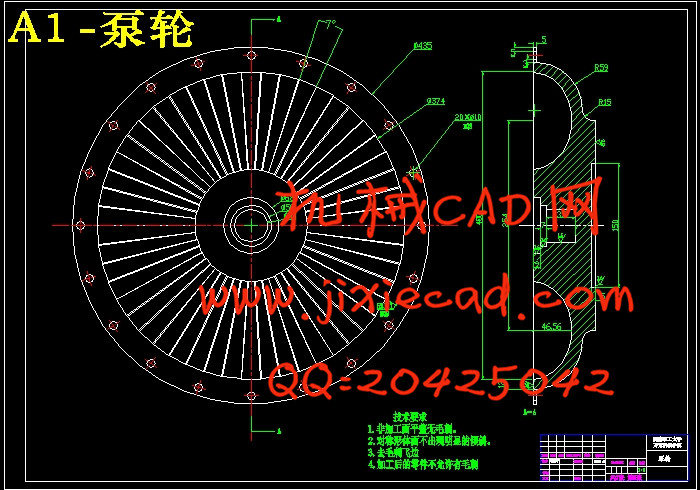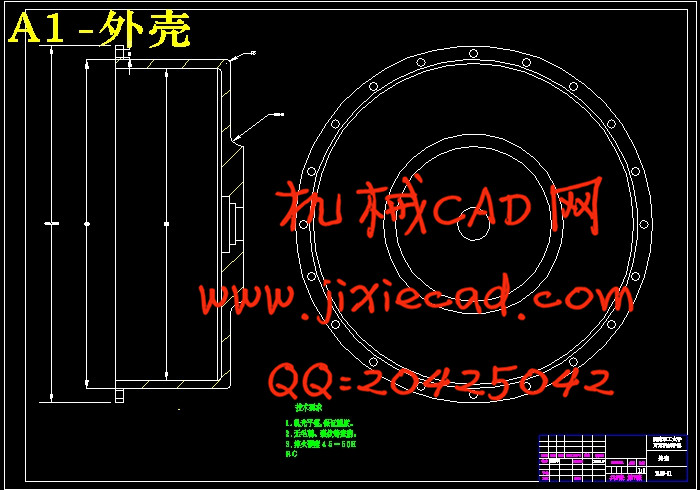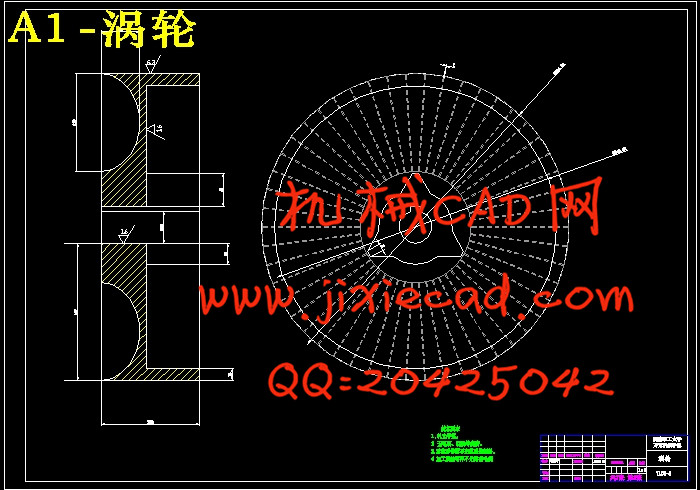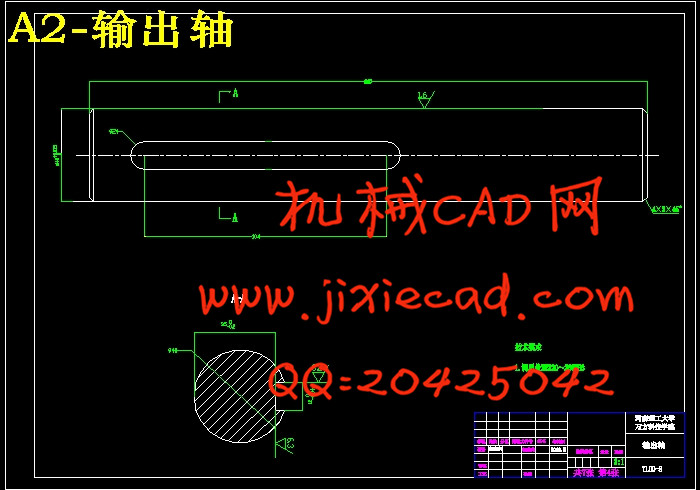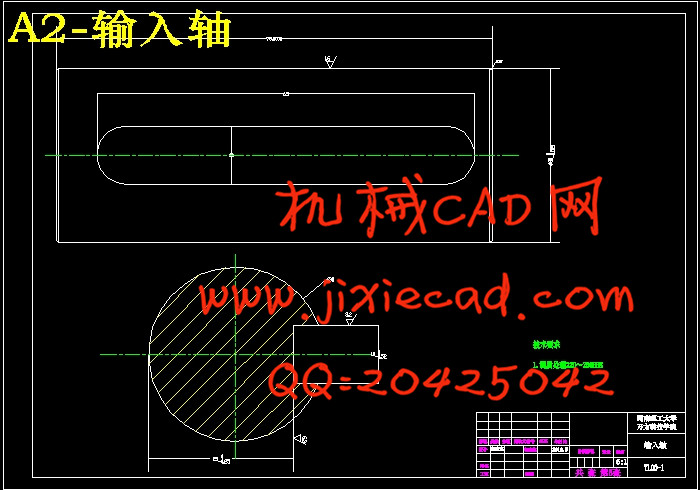设计简介
摘 要
本次设计的闭锁式液力耦合器可以有效的弥补这方面的缺陷。闭锁式液力耦合器就是在限矩形液力耦合器上加装离心式摩擦离合器组成。其结构使用静压泄液力耦合器的腔型,这样有侧辅腔有足够的空间来放置离心式摩擦离合器而不影响涡轮和泵轮的工作,并采取复合泄液力耦合器的内轮传动式结构。动力通过两路传递:一路以液力传动方式通过外壳~泵轮—涡轮~输出轴,另一路以摩擦离合器方式通过外壳~摩擦离合器~输出轴。随着涡轮转速的升高,摩擦离合器传递的力矩与n成比例的增长,其值在总力矩中的比值也相应增长,当涡轮转速超过某值以后,全部力矩呦摩擦离合器传递,液力传动不再起作用,这时消除了转差损失而成为“直接转动”,传动效率达100%。
关键字:限矩型、静压泄液式、内轮传动、闭锁式、摩擦离合器
ABSTRACT
The closure of the design of hydraulic coupling can effective type for the defects. Atresia type hydraulic coupling in rectangular hydraulic coupling is limited on centrifugal friction of the clutch. The structure of the static pressure hydraulic coupling use discharge cavity type, so have the auxiliary chamber has enough space to place centrifugal friction clutch and does not affect the turbine and pump wheels work, and take composite relief of hydraulic coupling in wheel drive type structure. Power through the two road transfer: all the way through the shell with hydraulic drive to pump wheels-turbine ~ output shaft, and the other all the way to the friction clutch way through the shell ~ ~ friction clutch output shaft. With the rise of turbine speed, friction clutch transmission torque and n proportional growth, the value of the total torque ratio also corresponding growth, when turbine speed exceeds a certain value after, all round torque friction clutch transmission, hydraulic transmission no longer function, then eliminate the turn and become poor loss "direct turn", the transmission efficiency of 100%.
Key word: limited moment type, static pressure relief liquid type, the inner drive, locking type, friction clutch
前 言 1
第一章 液力偶合器的基础知识 3
1.1 传动机构及液力传动 3
1.2 液力传动的基本原理 4
1.3 液力传动的分类 4
第二章 液力偶合器的工作原理 6
第三章 闭锁式液力偶合器的结构 9
3.1 液力偶合器的分类 9
3.2 限矩型液力偶合器 12
3.2.1 静压泄液式液力偶合器 13
3.2.2 动压泄液式液力偶合器 14
3.2.3 复合泄液式液力偶合器 15
3.2.4 闭锁式液力偶合器 17
第四章 闭锁式液力偶合器的参数设计 20
4.1 设计原始参数及其分析 20
4.1.1 所传功率和转速 20
4.1.2 额定转速比与效率 20
4.2 工作腔型参数设计及其选择 21
4.2.1 液力偶合器有效直径D的确定 21
4.2.2 工作腔模型选择及设计 22
4.2.3 轮叶设计 24
4.2.4 挡板的设计选择 26
4.3 轴的设计 27
4.3.1 轴上各轴段直径和长度的确定 27
4.3.2 强度校核 28
4.3.3 刚度校核 29
4.3.4 键的选择 29
4.3.5 轴承的选择 30
4.4 离心式摩擦离合器 32
4.4.1 初选摩擦片外径D、内径d、厚度b 32
4.4.2 后备系数β 32
4.4.3 离合器传递的最大静摩擦力矩Tc 33
4.4.4 单位压力P0 33
4.5 离心块的设计 34
4.6 壳体设计和螺栓螺钉选择 34
4.6.1 壳体设计 34
4.6.2 螺栓螺钉选择与强度计算 36
4.7 发热和散热计算 38
4.8 辅助系统 39
总 结 40
致 谢 42
参考文献 43
本次设计的闭锁式液力耦合器可以有效的弥补这方面的缺陷。闭锁式液力耦合器就是在限矩形液力耦合器上加装离心式摩擦离合器组成。其结构使用静压泄液力耦合器的腔型,这样有侧辅腔有足够的空间来放置离心式摩擦离合器而不影响涡轮和泵轮的工作,并采取复合泄液力耦合器的内轮传动式结构。动力通过两路传递:一路以液力传动方式通过外壳~泵轮—涡轮~输出轴,另一路以摩擦离合器方式通过外壳~摩擦离合器~输出轴。随着涡轮转速的升高,摩擦离合器传递的力矩与n成比例的增长,其值在总力矩中的比值也相应增长,当涡轮转速超过某值以后,全部力矩呦摩擦离合器传递,液力传动不再起作用,这时消除了转差损失而成为“直接转动”,传动效率达100%。
关键字:限矩型、静压泄液式、内轮传动、闭锁式、摩擦离合器
ABSTRACT
The closure of the design of hydraulic coupling can effective type for the defects. Atresia type hydraulic coupling in rectangular hydraulic coupling is limited on centrifugal friction of the clutch. The structure of the static pressure hydraulic coupling use discharge cavity type, so have the auxiliary chamber has enough space to place centrifugal friction clutch and does not affect the turbine and pump wheels work, and take composite relief of hydraulic coupling in wheel drive type structure. Power through the two road transfer: all the way through the shell with hydraulic drive to pump wheels-turbine ~ output shaft, and the other all the way to the friction clutch way through the shell ~ ~ friction clutch output shaft. With the rise of turbine speed, friction clutch transmission torque and n proportional growth, the value of the total torque ratio also corresponding growth, when turbine speed exceeds a certain value after, all round torque friction clutch transmission, hydraulic transmission no longer function, then eliminate the turn and become poor loss "direct turn", the transmission efficiency of 100%.
Key word: limited moment type, static pressure relief liquid type, the inner drive, locking type, friction clutch
前 言 1
第一章 液力偶合器的基础知识 3
1.1 传动机构及液力传动 3
1.2 液力传动的基本原理 4
1.3 液力传动的分类 4
第二章 液力偶合器的工作原理 6
第三章 闭锁式液力偶合器的结构 9
3.1 液力偶合器的分类 9
3.2 限矩型液力偶合器 12
3.2.1 静压泄液式液力偶合器 13
3.2.2 动压泄液式液力偶合器 14
3.2.3 复合泄液式液力偶合器 15
3.2.4 闭锁式液力偶合器 17
第四章 闭锁式液力偶合器的参数设计 20
4.1 设计原始参数及其分析 20
4.1.1 所传功率和转速 20
4.1.2 额定转速比与效率 20
4.2 工作腔型参数设计及其选择 21
4.2.1 液力偶合器有效直径D的确定 21
4.2.2 工作腔模型选择及设计 22
4.2.3 轮叶设计 24
4.2.4 挡板的设计选择 26
4.3 轴的设计 27
4.3.1 轴上各轴段直径和长度的确定 27
4.3.2 强度校核 28
4.3.3 刚度校核 29
4.3.4 键的选择 29
4.3.5 轴承的选择 30
4.4 离心式摩擦离合器 32
4.4.1 初选摩擦片外径D、内径d、厚度b 32
4.4.2 后备系数β 32
4.4.3 离合器传递的最大静摩擦力矩Tc 33
4.4.4 单位压力P0 33
4.5 离心块的设计 34
4.6 壳体设计和螺栓螺钉选择 34
4.6.1 壳体设计 34
4.6.2 螺栓螺钉选择与强度计算 36
4.7 发热和散热计算 38
4.8 辅助系统 39
总 结 40
致 谢 42
参考文献 43



